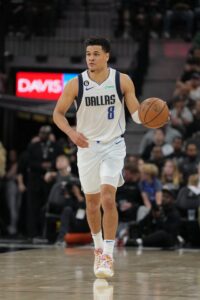At Hoops Rumors, we track virtually every kind of transaction, including free agent signings, trades, contract extensions, and many more. One form of roster move that has become increasingly common in recent years is the two-way conversion, involving a player either being converted from an Exhibit 10 contract to a two-way deal, or from a two-way deal to the standard roster.
We’re going to track all of the two-way conversions (either to or from the standard roster) in 2023/24 in the space below.
Let’s dive in…
Exhibit 10 contracts to two-way contracts:
When a player signs a contract during the offseason that includes Exhibit 10 language, he gives his new team the ability to unilaterally convert his deal into a two-way contract. The deadline to convert such a deal is the day before the season begins — this year that was Monday, October 23.
A player who signs a training camp contract that doesn’t include Exhibit 10 language could still sign a two-way deal with his club as long as his camp contract doesn’t include a guarantee exceeding $75K. However, he’d have to clear waivers before inking that new two-way contract.
Here are the players who had their Exhibit 10 contracts converted into two-way deals in 2023/24:
- Charles Bediako (Spurs) (story)
- Marques Bolden (Bucks) (story)
- Charlie Brown Jr. (Knicks) (story)
- Greg Brown (Mavericks) (story)
- Dexter Dennis (Mavericks) (story)
- Jordan Ford (Kings) (story)
- Justin Minaya (Trail Blazers) (story)
- Daishen Nix (Timberwolves) (story)
- Trevelin Queen (Magic) (story)
- Javonte Smart (Sixers) (story)
- Cole Swider (Heat) (story)
- Jacob Toppin (Knicks) (story)
- Stanley Umude (Pistons) (story)
- Jeenathan Williams (Rockets) (story)
The majority of these players were invited to training camp on Exhibit 10 contracts and ultimately earned two-way slots based on their performances in camp and the preseason.
No additional names will be added to this list for the rest of the 2023/24 season, since players can’t be converted to two-way deals after the regular season begins.
Two-way contracts to standard contracts:
A player who is on a two-way contract can have his deal unilaterally converted a one-year, minimum-salary contract by his team (or a two-year, minimum-salary contract if the player’s two-way deal covers two years, but this is rare).
Generally though, the team’s preference is to negotiate a longer-term contract with the player in order to avoid having him reach free agency at season’s end.
When converting a player from a two-way contract to the standard roster, the team can use cap room or the non-taxpayer mid-level exception to negotiate a deal of up to four years; the room exception for a deal up to three years; or the taxpayer mid-level exception, bi-annual exception, or minimum salary exception for a two-year deal.
The player must agree to any deal that is worth more than the minimum or exceeds the number of years left on his two-way pact.
Here are the players who have been converted from two-way deals to standard contracts so far in 2023/24, along with the terms of their new contracts, in chronological order:
- E.J. Liddell (Pelicans): Three years, minimum salary (story). First two years guaranteed. Third-year team option. Signed using non-taxpayer mid-level exception.
- Dru Smith (Heat): Two years, minimum salary (story). First year partially guaranteed ($425K). Second year non-guaranteed. Signed using minimum salary exception.
- Dylan Windler (Knicks): One year, minimum salary (story). Non-guaranteed. Signed using minimum salary exception.
- Skylar Mays (Trail Blazers): One year, minimum salary (story). Partially guaranteed ($850K). Signed using minimum salary exception.
- Joshua Primo (Clippers): Two years, minimum salary (story). First year guaranteed. Second year partially guaranteed ($1MM). Signed using minimum salary exception.
- Vince Williams (Grizzlies): Four years, $9,144,340 (story). First three years guaranteed. Fourth-year team option. Signed using mid-level exception.
- GG Jackson (Grizzlies): Four years, $8,511,167 (story). First three years guaranteed. Fourth-year team option. Signed using mid-level exception.
- Keon Ellis (Kings): Three years, $5,105,710 (story). First year guaranteed. Second year non-guaranteed. Third-year team option. Signed using room exception.
- Lindy Waters III (Thunder): Two years, minimum salary (story). First year guaranteed. Second year non-guaranteed. Signed using minimum salary exception.
- Craig Porter Jr. (Cavaliers): Four years, $8,019,739 (story). First year guaranteed. Second year partially guaranteed ($1MM). Third year non-guaranteed. Fourth-year team option. Signed using mid-level exception.
- Duop Reath (Trail Blazers): Three years, $6,221,677 (story). First two years guaranteed. Third-year non-guaranteed. Signed using mid-level exception.
- Jeremiah Robinson-Earl (Pelicans): Two years, minimum salary (story). First year guaranteed. Second-year team option. Signed using minimum salary exception.
- Lester Quinones (Warriors): One year, minimum salary (story). Fully guaranteed. Signed using minimum salary exception (straight conversion).
- Stanley Umude (Pistons): Two years, minimum salary (story). First year guaranteed. Second-year team option. Signed using minimum salary exception.
- Onuralp Bitim (Bulls): Three years, $4,613,534 (story). First year guaranteed. Second and third years non-guaranteed. Signed using mid-level exception.
- Trent Forrest (Hawks): One year, minimum salary (story). Fully guaranteed. Signed using minimum salary exception (straight conversion).
- Eugene Omoruyi (Wizards): Two years, $3,096,970 (story). First year guaranteed. Second year non-guaranteed. Signed using mid-level exception.
- Jalen Wilson (Nets): Three years, $4,963,534 (story). First year guaranteed. Second year partially guaranteed ($75K). Third-year team option. Signed using mid-level exception.
- Javon Freeman-Liberty (Raptors): Two years, minimum salary (story). First year guaranteed. Second year partially guaranteed ($100K). Signed using minimum salary exception.
- Dominick Barlow (Spurs): One year, minimum salary (story). Fully guaranteed. Signed using minimum salary exception (straight conversion).
- A.J. Lawson (Mavericks): Four years, $7,912,032 (story). First year guaranteed. Second, third, and fourth years non-guaranteed. Signed using mid-level exception.
- Kendall Brown (Pacers): Three years, $5,522,280 (story). First year guaranteed. Second year non-guaranteed. Third-year team option. Signed using room exception.
- Luka Garza (Timberwolves): One year, minimum salary (story). Fully guaranteed. Signed using minimum salary exception (straight conversion).
- Jeff Dowtin (Sixers): Two years, minimum salary (story). First year guaranteed. Second-year team option. Signed using minimum salary exception.
- Jared Butler (Wizards): Three years, $5,828,471 (story). First year guaranteed. Second year non-guaranteed. Third-year team option. Signed using mid-level exception.
- Neemias Queta (Celtics): Two years, minimum salary (story). First year guaranteed. Second-year team option. Signed using minimum salary exception.
- Ricky Council (Sixers): Four years, $7,384,092 (story). First year guaranteed. Second and third years non-guaranteed. Fourth-year team option. Signed using mid-level exception.
- Matt Ryan (Pelicans): Three years, $6,078,471 (story). First year guaranteed. Second year non-guaranteed. Third-year team option. Signed using mid-level exception.
- Usman Garuba (Warriors): One year, minimum salary (story). Fully guaranteed. Signed using minimum salary exception (straight conversion).
Players on two-way contracts can be converted to standard deals until the last day of the regular season, so this list won’t be considered complete until mid-April.
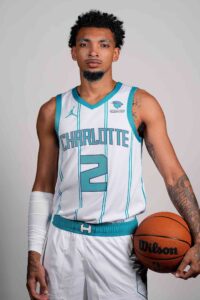 Bouknight was the only player who was retained while his team declined his 2024/25 rookie scale option.
Bouknight was the only player who was retained while his team declined his 2024/25 rookie scale option.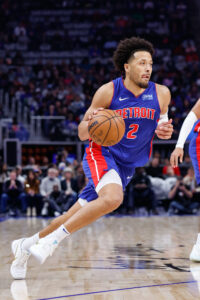
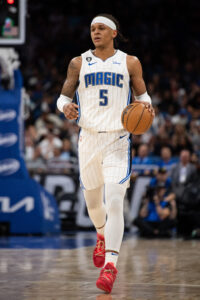
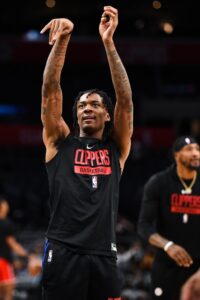
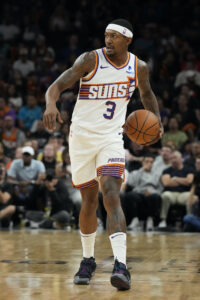 The Suns acquired
The Suns acquired 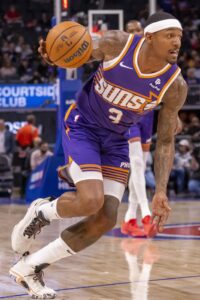 Beal doesn’t need to be the face of the Suns. He doesn’t need to be the team’s best – or even second-best – player. The Suns just need him to be an immediate upgrade over 38-year-old Paul, who was a key reason Phoenix reached the Finals in 2021 and had the league’s best record in ‘22.
Beal doesn’t need to be the face of the Suns. He doesn’t need to be the team’s best – or even second-best – player. The Suns just need him to be an immediate upgrade over 38-year-old Paul, who was a key reason Phoenix reached the Finals in 2021 and had the league’s best record in ‘22.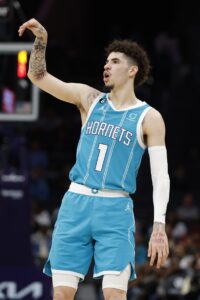
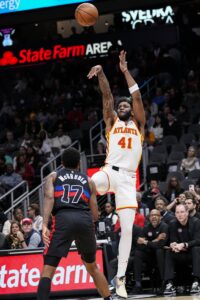
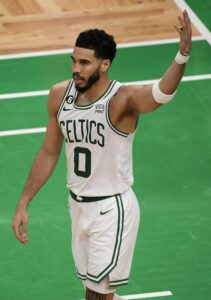 Boston Celtics (55.5 wins):
Boston Celtics (55.5 wins): 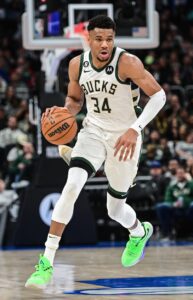 Milwaukee Bucks (54.5 wins): 76.9%
Milwaukee Bucks (54.5 wins): 76.9%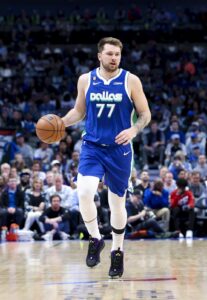 Dallas Mavericks (44.5 wins):
Dallas Mavericks (44.5 wins): 